PART II. Die Varieties:
Design Extension Dimples
Definition: Design extension dimples (DED) are raised areas on the working die (indents on the coin) originating from an unknown cause.
While we are unsure of the exact cause of this phenomena, both Mike Diamond and I feel that it is hubbing related. Rather than affix a category (error or variety) to this oddity, we are simple calling it a die anomaly. The discovery piece is credited to Fred Weinberg and has been encapsulated by ICG. Mike Diamond has also written an article concerning Design Extension Dimples in his column “Collectors’’ Clearinghouse” in Coin World.
If more of this anomaly type are found, which I am sure will happen, a designation will be applied to each individual find. Weinberg’s find will now have the designation of 2011D-100DEDO-001AJ.
The attributes for this anomaly type can be seen as depressions on the coins surface that extend from the peripheral design elements in an inward, radial pattern. Refer to the pictures below of 2011D-100-DEDO-001AJ.
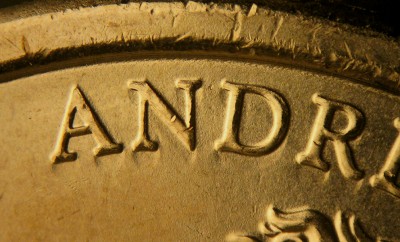
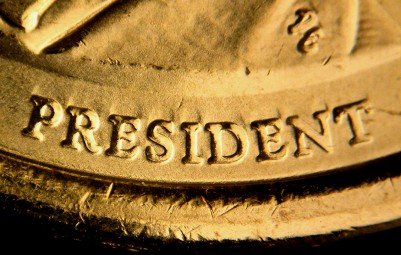
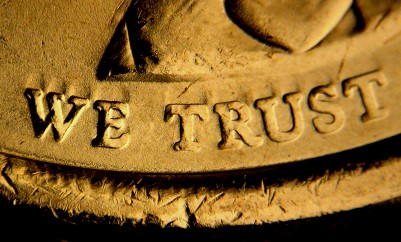
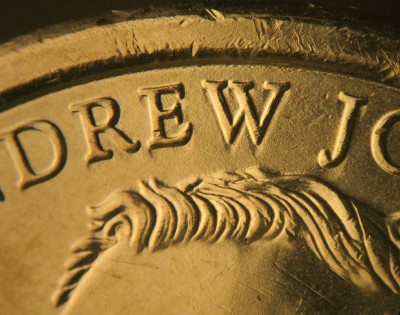
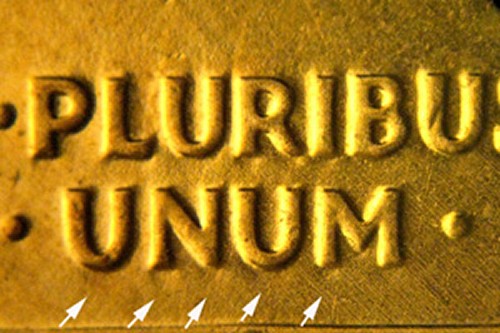
Design extension dimples can also be seen on the reverse die of this 2008D Lincoln cent.
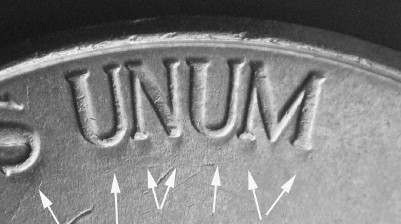
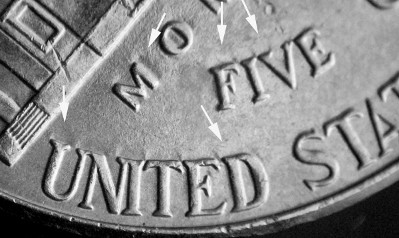
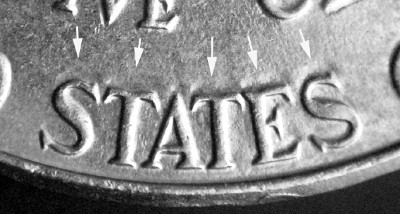
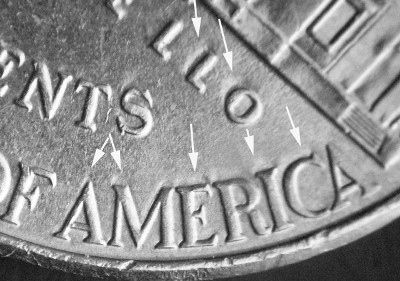
Design extension dimples can also be seen on the reverse die of this 2010P Jefferson nickel. While this maybe a true die anomaly, it seems to be quite common and found on all denominational coins. Theoretically, design extension dimples will lessen in strength as the die ages. However, the possible use of determining the die’s age by the strength of the dimples is hamper by the fact of not knowing the strength of the dimples at the initial strike.
As for collectibilty, since they are not uncommon, no premium is attached to the anomaly.
Continuing research by Al Lipa has shown that design extension dimples occur in all the denominations, with dimes least frequently affected. The majority of affected dies with strong DED seem to be produced by the Denver Mint.